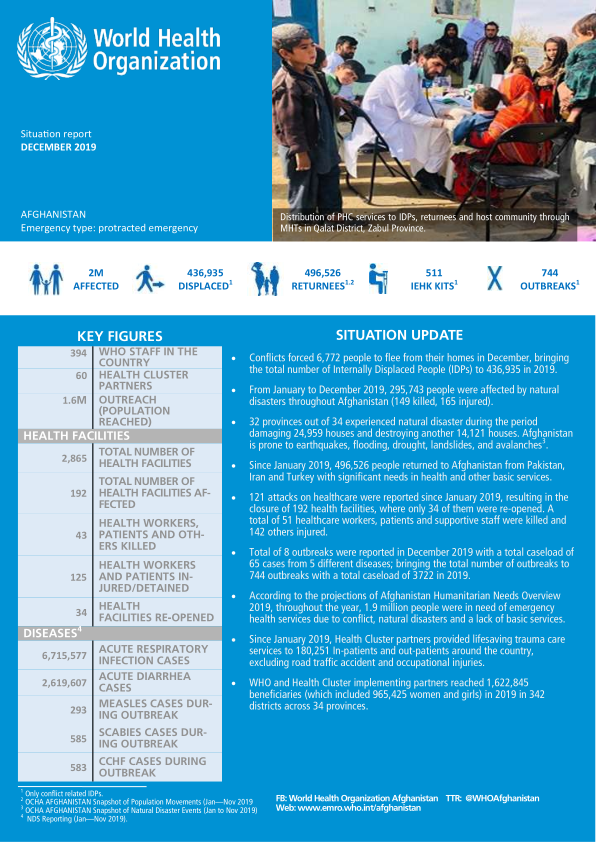Conflicts forced 6,772 people to flee from their homes in December, bringing the total number of Internally Displaced People (IDPs) to 436,935 in 2019.
From January to December 2019, 295,743 people were affected by natural disasters throughout Afghanistan (149 killed, 165 injured).
32 provinces out of 34 experienced natural disaster during the period damaging 24,959 houses and destroying another 14,121 houses. Afghanistan is prone to earthquakes, flooding, drought, landslides, and avalanches3 .
Since January 2019, 496,526 people returned to Afghanistan from Pakistan,
Iran and Turkey with significant needs in health and other basic services.
121 attacks on healthcare were reported since January 2019, resulting in the closure of 192 health facilities, where only 34 of them were re-opened. A total of 51 healthcare workers, patients and supportive staff were killed and 142 others injured.
Total of 8 outbreaks were reported in December 2019 with a total caseload of 65 cases from 5 different diseases; bringing the total number of outbreaks to 744 outbreaks with a total caseload of 3722 in 2019.
According to the projections of Afghanistan Humanitarian Needs Overview 2019, throughout the year, 1.9 million people were in need of emergency health services due to conflict, natural disasters and a lack of basic services.
Since January 2019, Health Cluster partners provided lifesaving trauma care services to 180,251 In-patients and out-patients around the country, excluding road traffic accident and occupational injuries.
WHO and Health Cluster implementing partners reached 1,622,845 beneficiaries (which included 965,425 women and girls) in 2019 in 342 districts across 34 provinces


